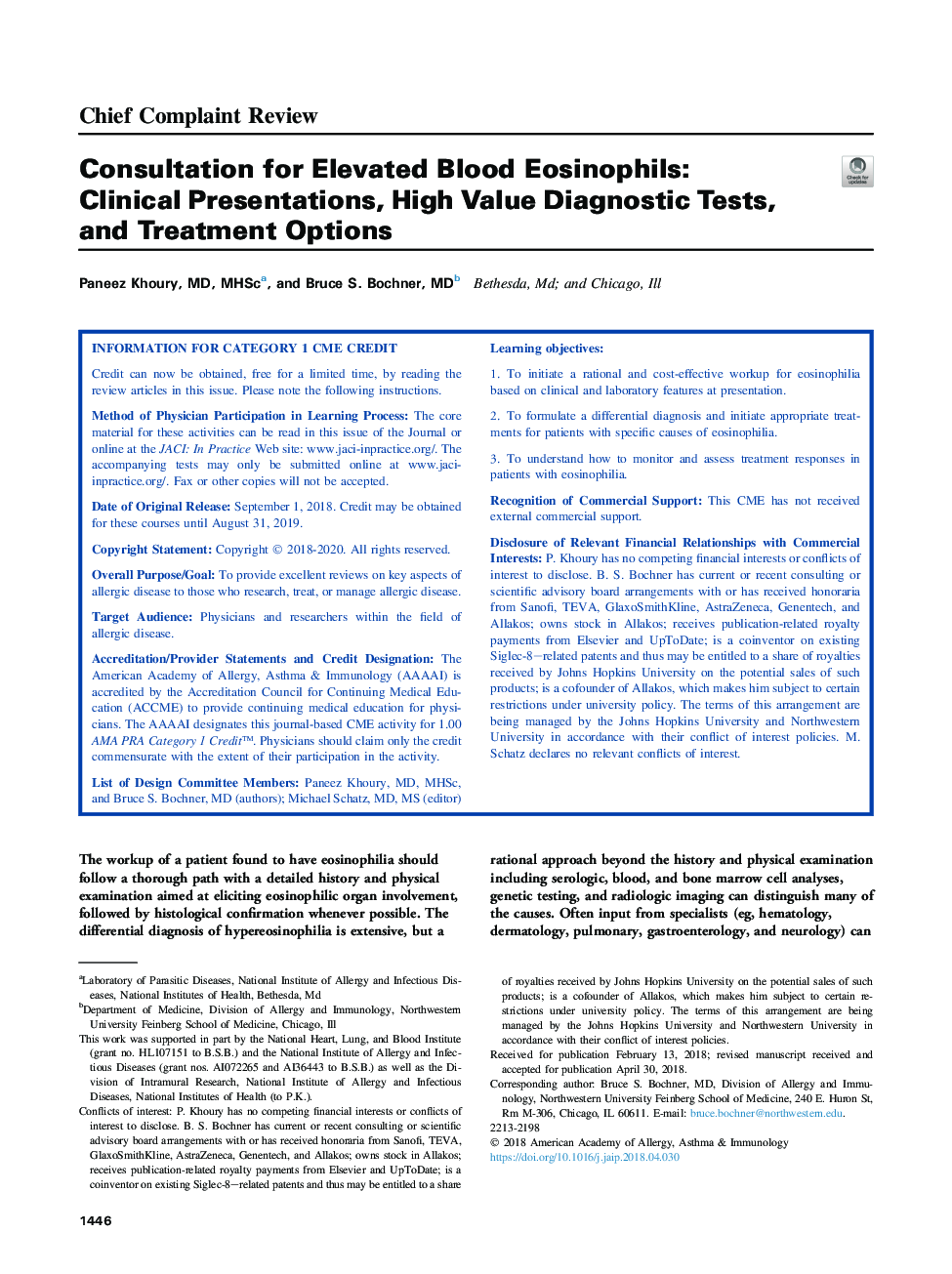| کد مقاله | کد نشریه | سال انتشار | مقاله انگلیسی | نسخه تمام متن |
|---|---|---|---|---|
| 8963735 | 1646630 | 2018 | 8 صفحه PDF | دانلود رایگان |
عنوان انگلیسی مقاله ISI
Consultation for Elevated Blood Eosinophils: Clinical Presentations, High Value Diagnostic Tests, and Treatment Options
ترجمه فارسی عنوان
مشاوره برای افزایش ائوزینوفیل خون: ارائه های بالینی، آزمایشات تشخیصی با ارزش و گزینه های درمان
دانلود مقاله + سفارش ترجمه
دانلود مقاله ISI انگلیسی
رایگان برای ایرانیان
کلمات کلیدی
CBCFDAEGPAAECTesting - آزمایش کردنEosinophilia - ائوزینوفیلیاMRI - امآرآی یا تصویرسازی تشدید مغناطیسیHES - او هستDiagnosis - تشخیصMagnetic resonance imaging - تصویربرداری رزونانس مغناطیسیabsolute eosinophil count - تعداد ائوزینوفیل مطلقcomputed tomography - توموگرافی کامپیوتری یا سی تی اسکن یا مقطعنگاری رایانهایintravenously - داخل وریدیTreatment - درمانFood and Drug Administration - سازمان غذا و داروHypereosinophilic syndrome - سندرم HypereosinophilicHypereosinophilic syndromes - سندرم Hypereosinophiliccomplete blood cell count - شمارش کامل سلول های خونیeosinophilic granulomatosis with polyangiitis - گرانولوماتوز eosinophilic با polyangiitis
موضوعات مرتبط
علوم زیستی و بیوفناوری
ایمنی شناسی و میکروب شناسی
ایمونولوژی
چکیده انگلیسی
The workup of a patient found to have eosinophilia should follow a thorough path with a detailed history and physical examination aimed at eliciting eosinophilic organ involvement, followed by histological confirmation whenever possible. The differential diagnosis of hypereosinophilia is extensive, but a rational approach beyond the history and physical examination including serologic, blood, and bone marrow cell analyses, genetic testing, and radiologic imaging can distinguish many of the causes. Often input from specialists (eg, hematology, dermatology, pulmonary, gastroenterology, and neurology) can help narrow down the possibilities and eventually result in a specific diagnosis. An accurate diagnosis is key to choosing the optimal treatment for a particular condition, and this is certainly true for eosinophilic disorders. Myeloid neoplasms that present with eosinophilia, for example, may respond to medicines that the allergist may be less accustomed to using, such as immunosuppressive agents and kinase inhibitors. Similarly, newly approved biologics that target IL-5 and eosinophils may provide new options for management. What follows is a case-based approach that helps to underscore key features of diagnosis, management, and follow-up when faced with a patient with a potential eosinophil-related disorder.
ناشر
Database: Elsevier - ScienceDirect (ساینس دایرکت)
Journal: The Journal of Allergy and Clinical Immunology: In Practice - Volume 6, Issue 5, SeptemberâOctober 2018, Pages 1446-1453
Journal: The Journal of Allergy and Clinical Immunology: In Practice - Volume 6, Issue 5, SeptemberâOctober 2018, Pages 1446-1453
نویسندگان
Paneez MD, MHSc, Bruce S. MD,
